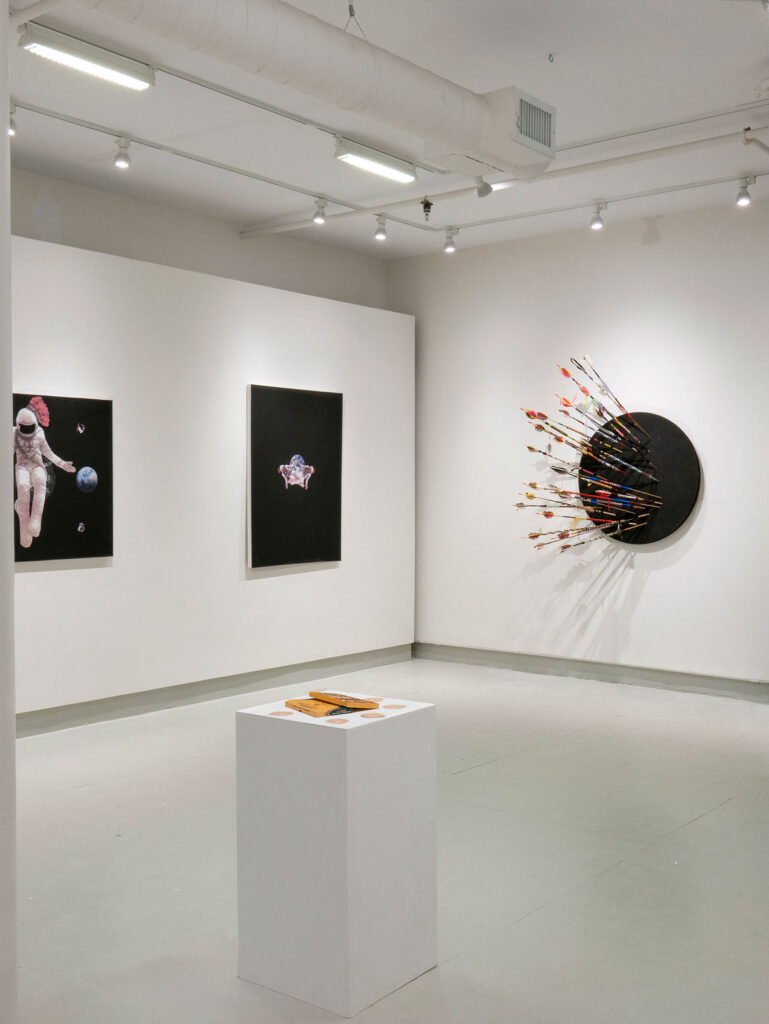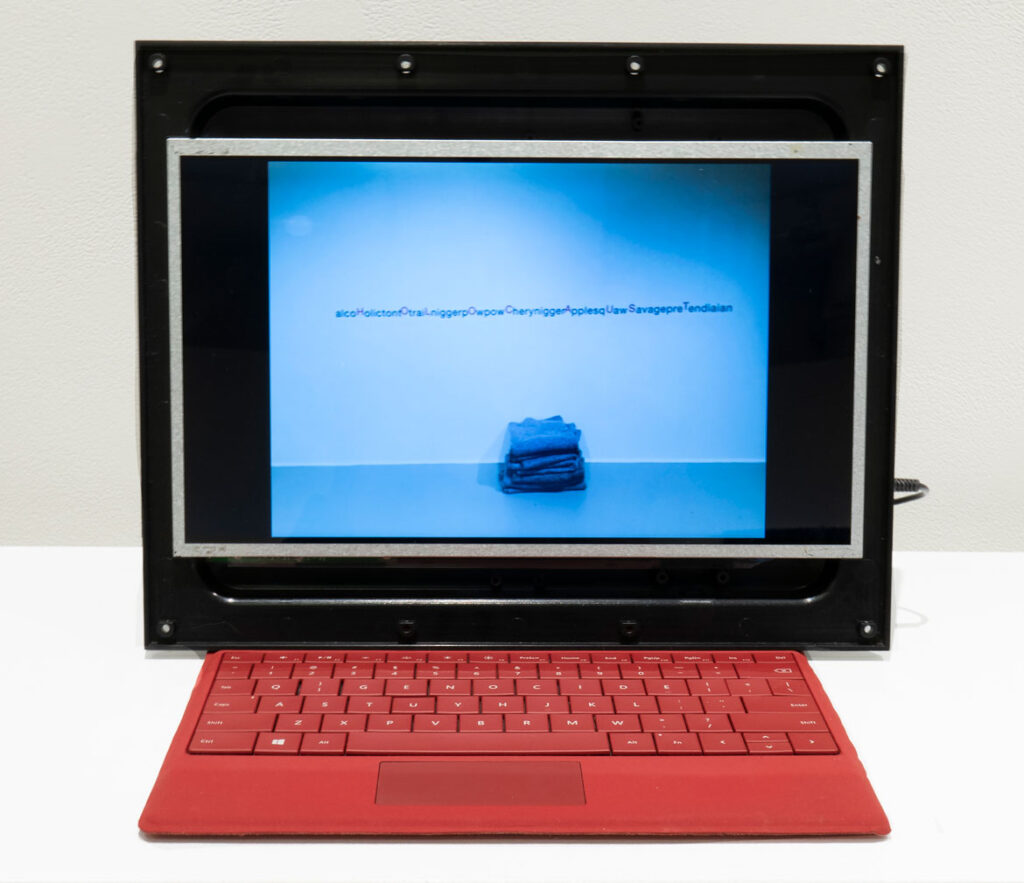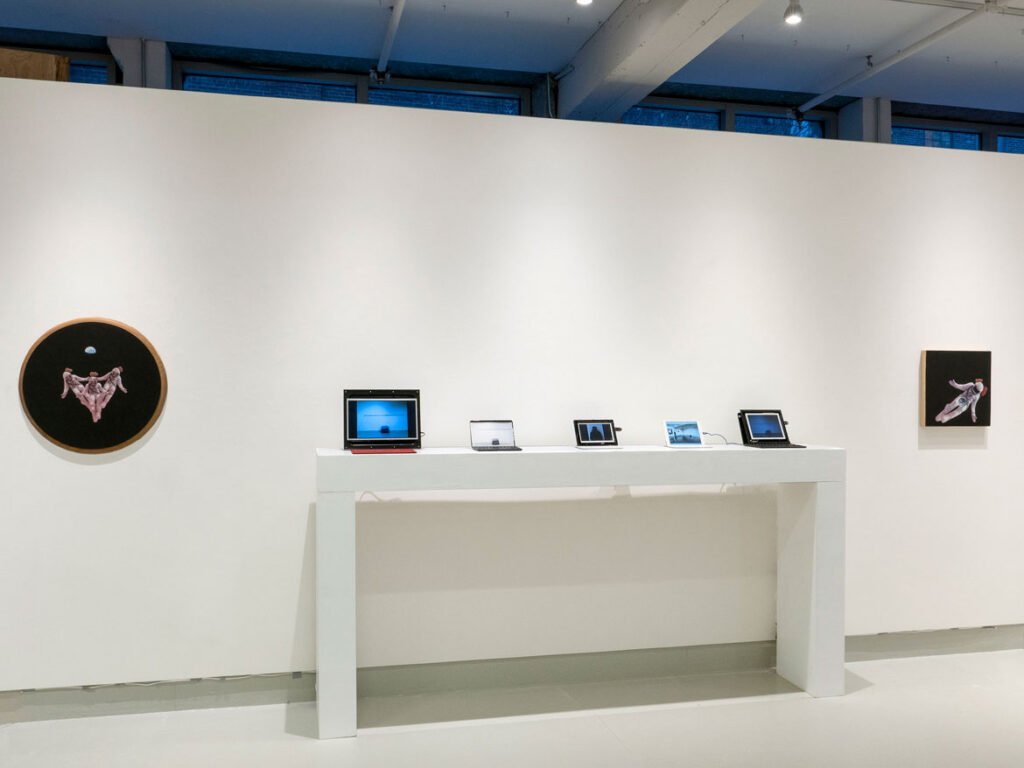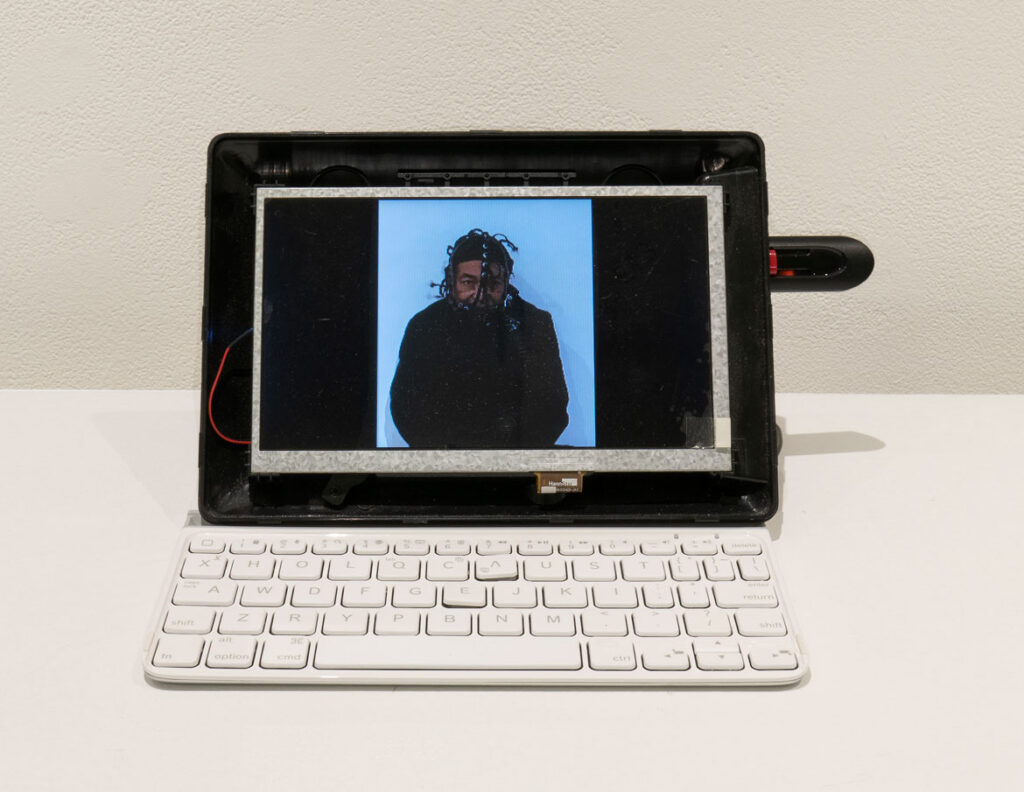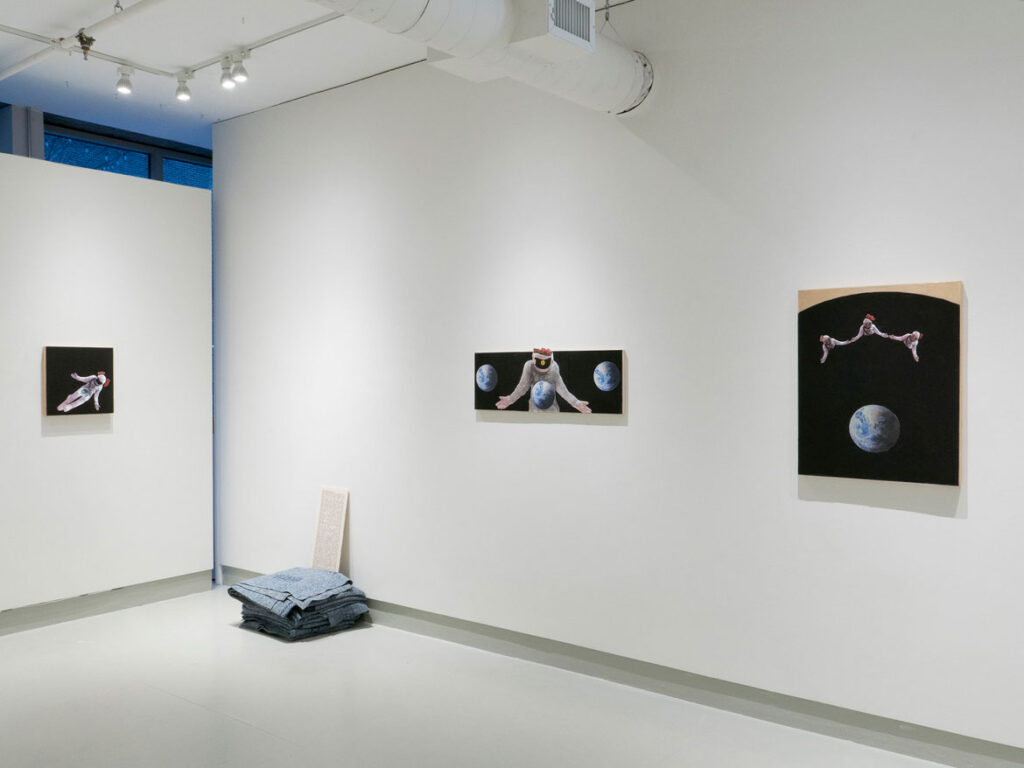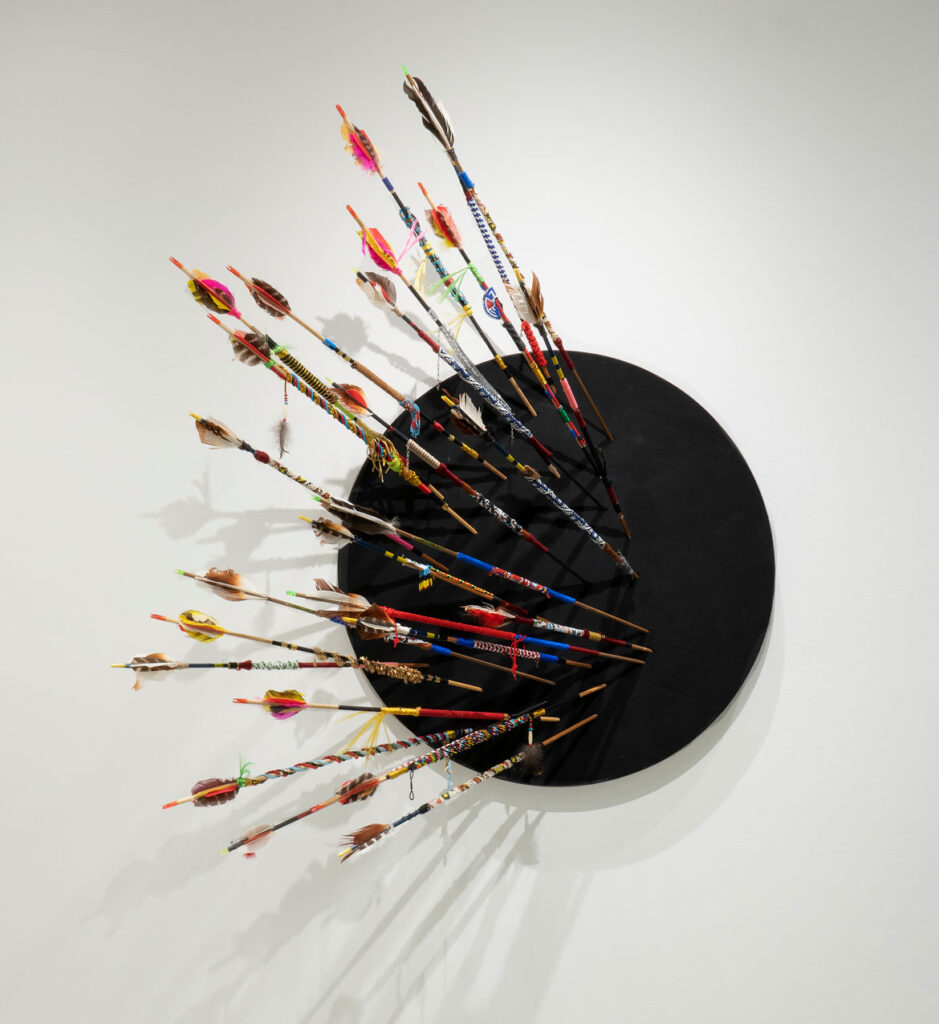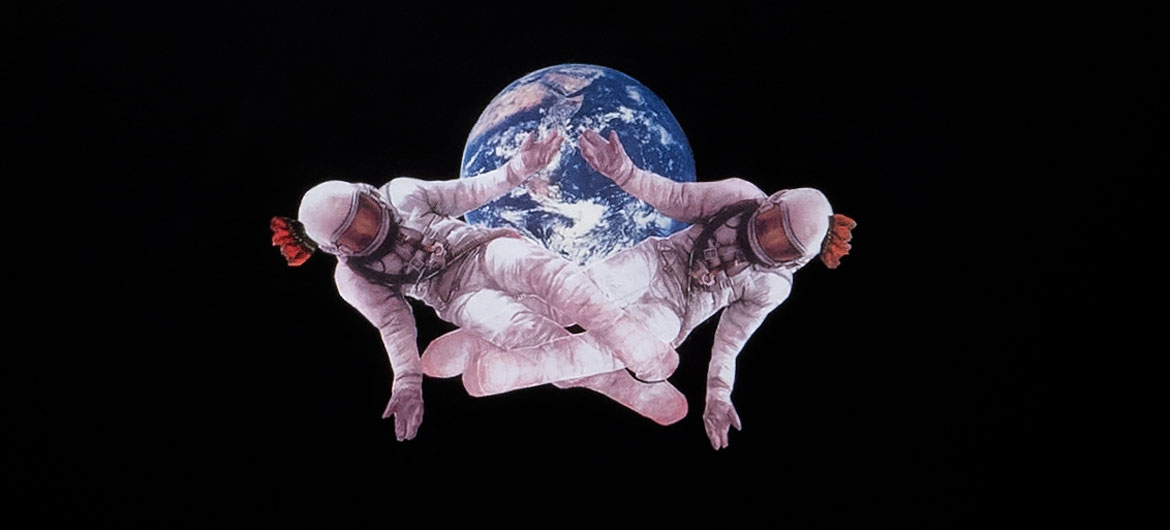“At every turn this country has the opportunity to do the right thing, they don’t,” James Ari Montford tells me. We talked recently about his exhibition “Indigenous Voice” at Howard Yezerski Gallery in Boston from Feb. 17 to March 20, 2021. The gallery was filled with artworks digging into his Black and indigenous roots as well as the racism of the United States.
The pieces included his “Black Indians in Space,” mixed-media artworks combining imagery of astronauts and racist stereotypes. There were also computer laptops with keyboards altered to spell out “Genocide,” “Holocaust” and “Wer BIPOC.” On the floor in a corner was a folded pile of blankets meant to evoke blankets with which smallpox spread from European colonists to Native Americans, and above the blankets a text that was an amalgam of racist myths. “They all underscore the indigenous experience I’ve had in my life,” Montford says.
Montford, who lives in Boston and Providence, will be one of the speakers—with L’Merchie Frazier, Edmund Barry Gaither, Dell M. Hamilton, Jon Henry and Nafis White—at the online “Art & Racial Justice” symposium from Bridgewater State University on Monday, April 12, at 6 p.m.
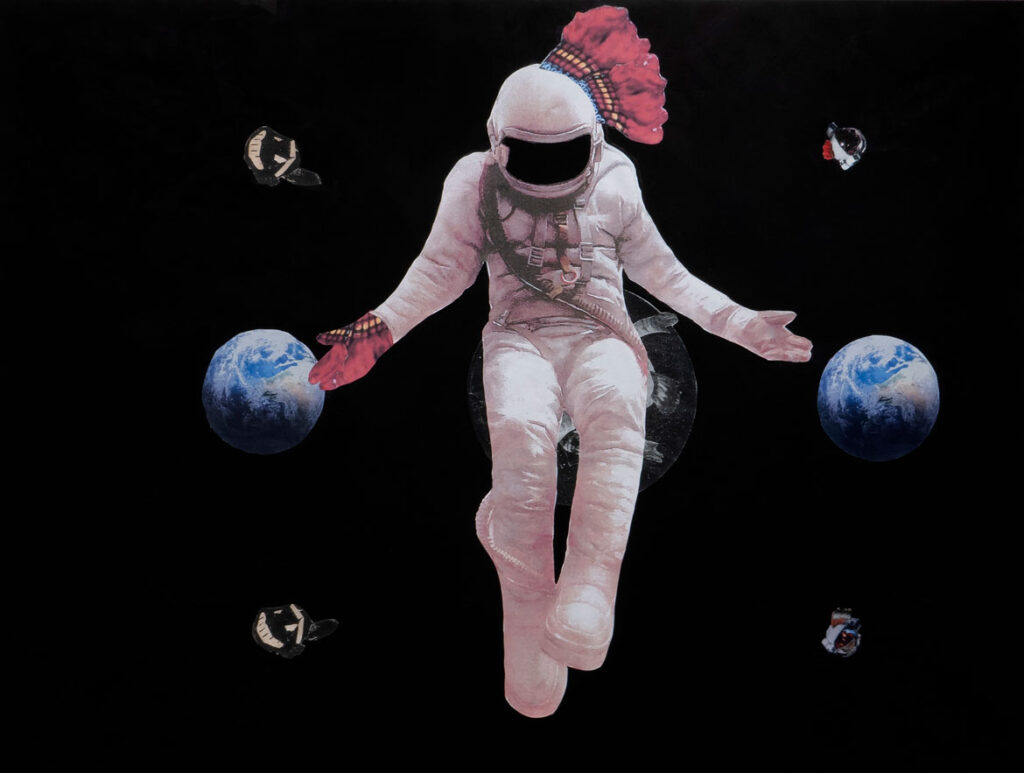
‘Black Indians in Space’
Montford says his “Black Indians in Space” artworks speak of “People of color in the next realm and the next life.”
“When we get to Mars, how many Black people are going to be standing there on Mars?” Montford asks. “That’s the reality of how we are going to be represented in space?’
“Black Indians in Space: It’s a measure of the impossible. It’s not going to happen,” Montford says.
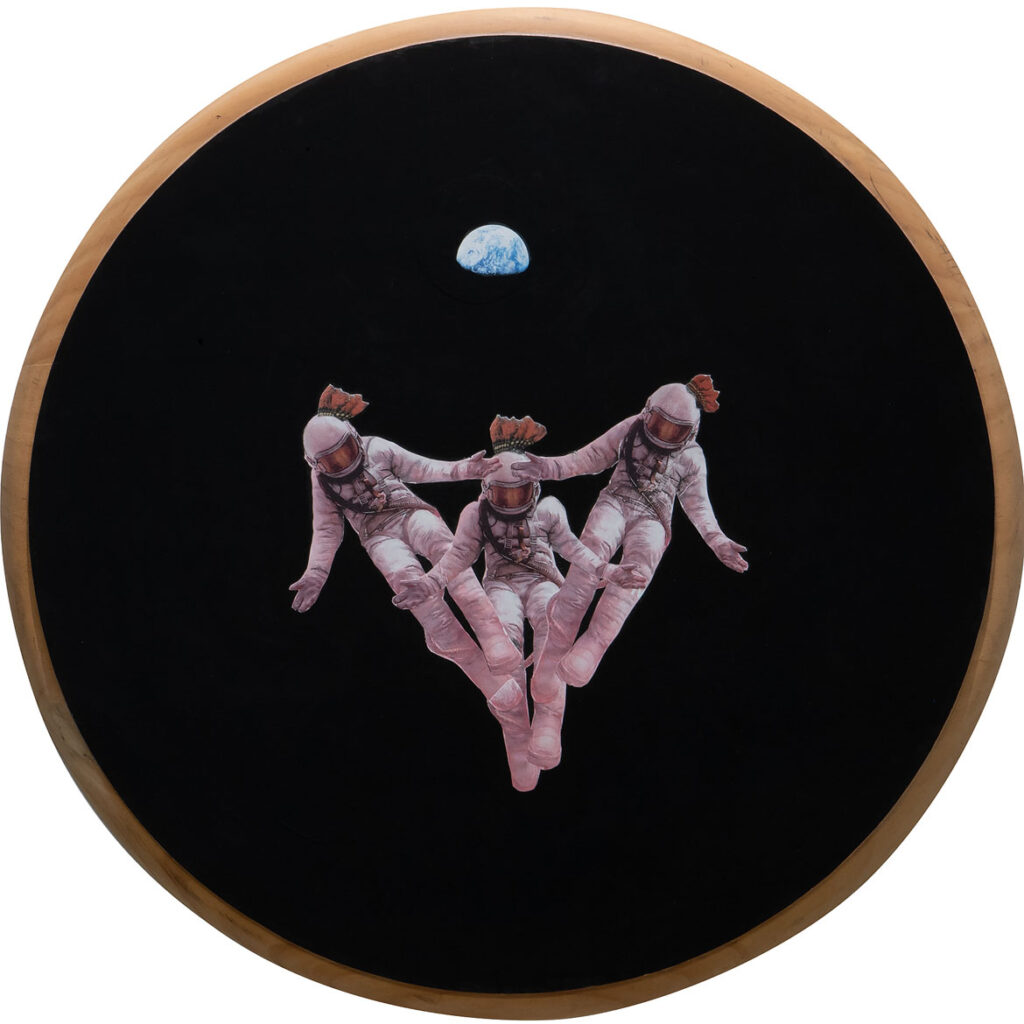
The mixed-media artworks picture figures in spacesuits floating in black voids—the faces range from Montford’s own to sports mascots to “Black stereotype images.” Montford is working larger than his previous works—at around 3 feet by 4 feet. “Blackness is also what these pieces are about—the vast scale. … That black, just a deep, rich black.”
“I’m definitely connected to it all by the notion of being a cyborg,” Montford says, referring to the satellite-connected pacemaker he had put in during an emergency operation last fall to aid his heart. “I’ve lived longer than my Black body can sustain.”
“Stress levels are just incredible,” Montford says. “PTSD—Post-Traumatic Slavery Disorder. I live it. That’s the reality. … Because of PTSD, Post-Traumatic Slavery Disorder, I’m physically impacted by issues and system racism and stress, all these issues that are present in Black life. And this Black body is the result of that. … Without health insurance I’d be dead.”
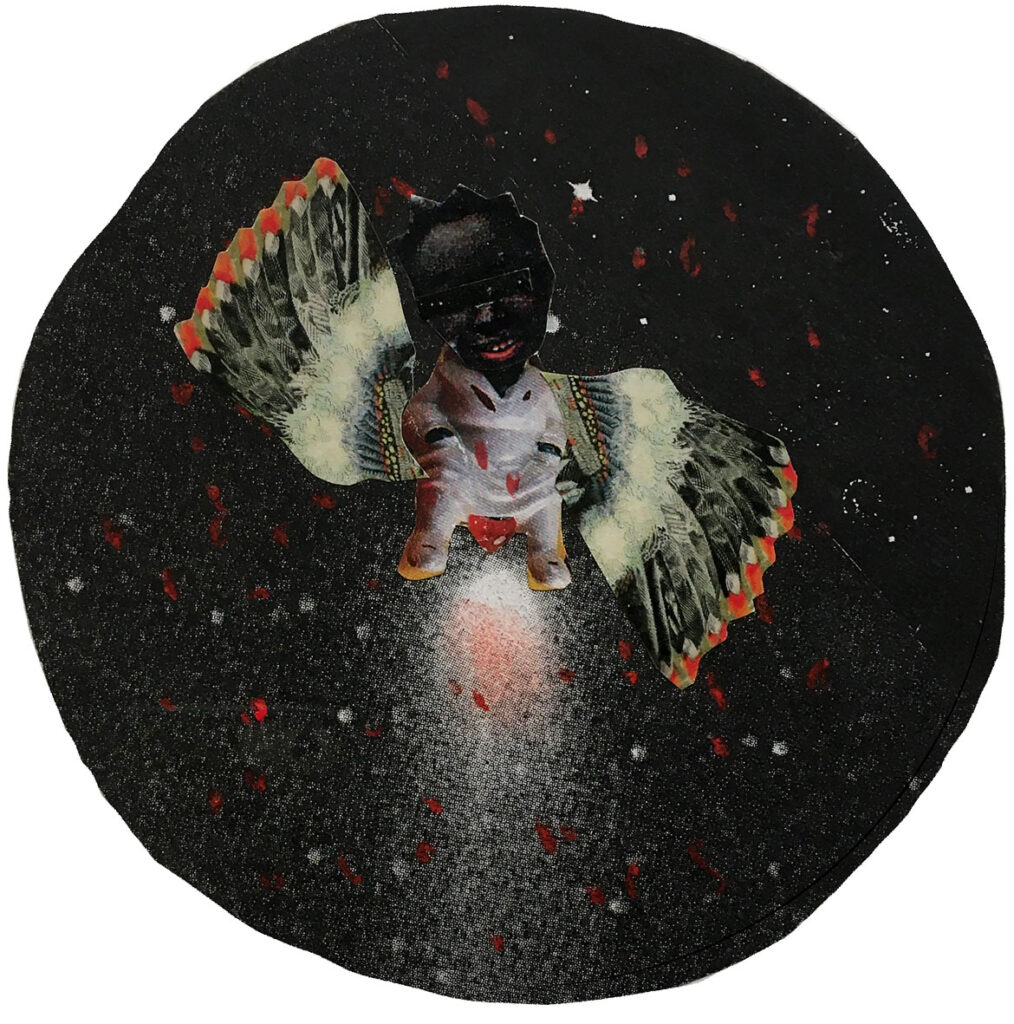
“I’m somebody who attended a Klan rally with [artist] Barkley Hendricks in the 1980s and that changed my life—in terms of racism and it being endemic in the culture,” Montford says. It makes him continue to wonder: “At some point, will there be a race war? That’s a real question.”
The coronavirus pandemic, the police murder of George Floyd, and the Black Lives Matter protests that took place internationally in response “hasn’t impacted me in a way other folks might relate to. In part because everyday is a struggle. I’m fearful of being stopped by police every time I leave the house, every day. That might be more powerful to me than the pandemic.”
“I grew up fearful as a kid of that whole Emmett Till situation,” referring to the racist murder of an African American 14-year-old in Mississippi in 1955. “What I’ve seen is it hasn’t changed. … Will this man who killed George Floyd be acquitted? Will he serve some time? That shouldn’t even be a question.”
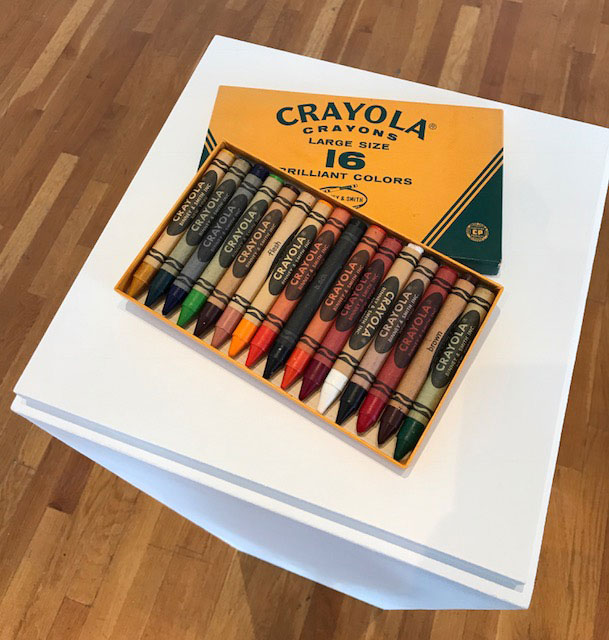
‘Not My Color’
“Not My Color,” a set of crayons in which the one labeled “flesh” is caucasian pink, was inspired by testosterone patches Montford was prescribed by his doctor some years back. “I open it up and it’s pink, it’s ‘flesh’ color. Oh, my God, I can’t put this on my body,” Montford says. “These folks making these decisions sitting around corporate tables, they don’t think it had to be Black and brown because they don’t have insurance.”
Previously: James Montford’s ‘Post-Traumatic Slavery Disorder’
If this is the kind of coverage of arts, nature, cultures and activisms you appreciate, please support Wonderland by contributing to Wonderland on Patreon. And sign up for our free, (hopefully) weekly newsletter so that you don’t miss any of our reporting. (All content ©Greg Cook 2021 or the respective creators.)
